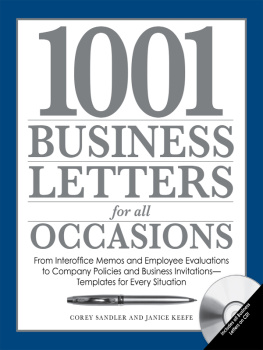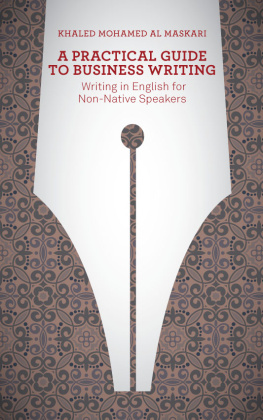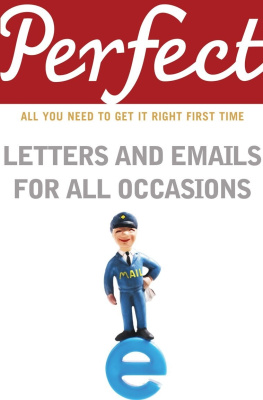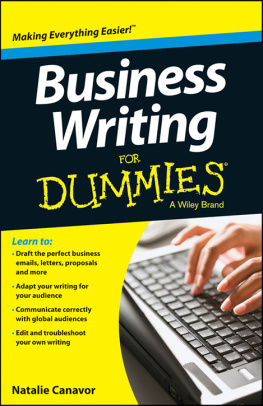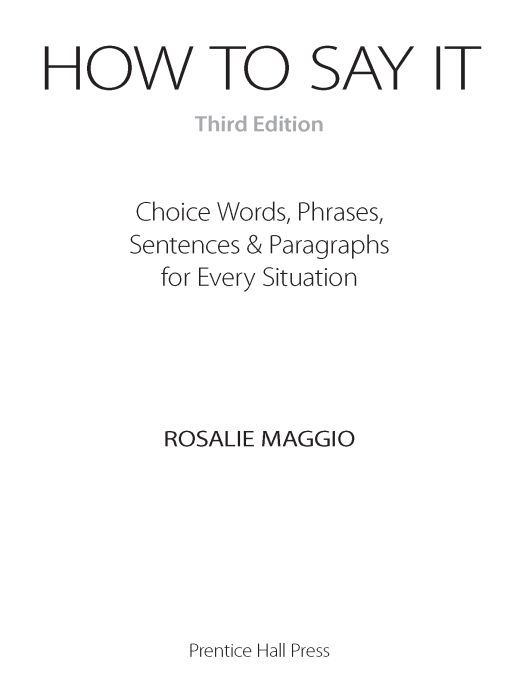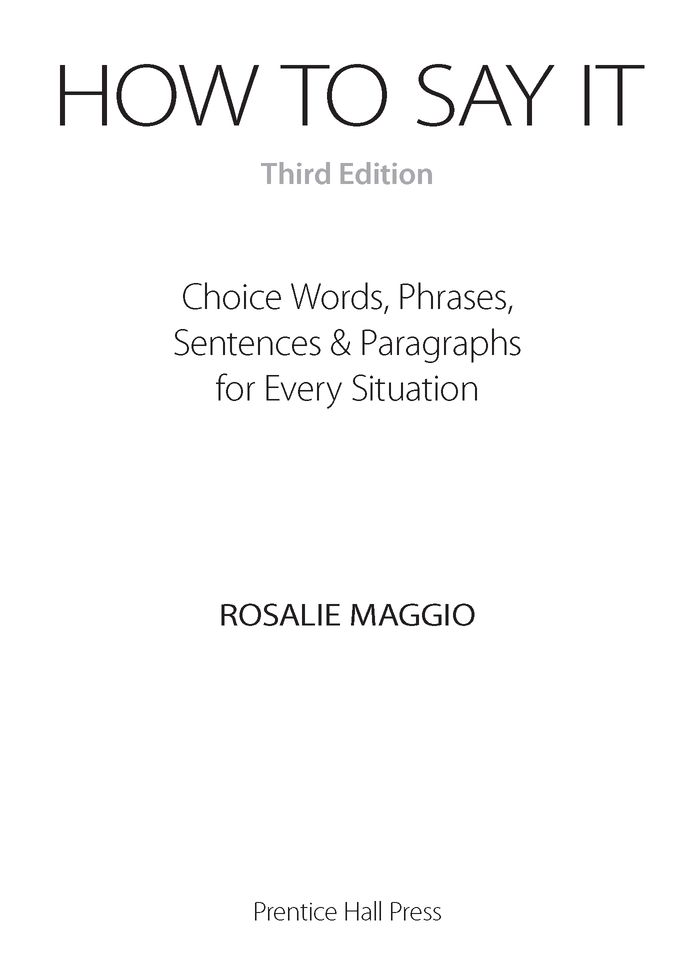Table of Contents
To DAVID
Liz, Katie, Jason
Matt, Nora, Zoe
ACKNOWLEDGMENTS
Thank you to those who shared their letters and opinions with me: Shelley Sateren; Steve Sikora; Mark Maggio; Dr. Matt Maggio; Patrick Maggio, Esq.; Frank Maggio; Terry Hay Maggio; Mary Maggio; Dr. Paul T. Maggio; Kevin Maggio, Esq.; Irene Nash Maggio; Dr. Paul J. Maggio; Mike Maggio, Esq.; Michael Parker; Bonnie Z. Goldsmith, Patricia Yeager and the Denver Center for Independent Living; Nick Niemeyer; Sheila Hanley and The Dublin Walk; Maggie Parr; Jazzou Jones; Dr. Greg Filice; Katherine King; Debbye Calhoun Spang; Irmiter Contractors and Builders Limited; Jeanne Goerss Novak; and Ben Baughman.
Many of the sentences, paragraphs, and letters are taken from letters Ive saved over the years (imagine rummaging through boxes and boxes of them in the attic looking for that great thank-you note). Thanks and love to all my favorite correspondents. You know who you are.
Im still grateful to Tom Power, the genial and gifted godfather of this book. And many thanks to Maria Gagliano, who gave it new life.
INTRODUCTION
All that is requisite to become proficient in any Art, is to know what to do and how to do it; and the Art of Letter-writing is no exception to this general rule.
F. M. PAYNE, Paynes Business Letter Writer and Book of Commercial Forms (1884)
How to Say It is a practical, easy-to-use book that tells you what to say and how to say it. Its flexible approach helps you fashion compelling letters in little more time than it takes to handwrite or type them.
Although an impressive amount of business and social interaction takes place today over the telephone and fax, by e-mail, or in person, the well-written letter remains a staple of business success and one of the strongest connecting links between human beings.
Most of us are capable of writing a satisfactory letter, but few of us have the time and mental energy to deal with the countless letters that life today seems to demand of usespecially since all of them should have been written yesterday.
How to Say It features comprehensive, versatile lists of words, phrases, sentences, and paragraphs that allow you to express yourself on any subject in your own voice and style.
Thesaurus-like, these lists provide you with terms relating to your topic. Whether you want to sound formal or casual, traditional or contemporary, businesslike or lighthearted, distant or intimate, youll find here the words for every letterwriting occasionfrom powerful, cogent business letters to warm, sensitive personal letters.
An important message of this book, delivered indirectly in its pages, is that there is rarely one right way to write a letter. You may follow, adapt, or ignore the guidelines given here; after all, you know more about your message and your reader than any letterwriting manual. Except for someone like Napoleon, who apparently wrote more than 50,000 letters in his lifetime (and nobody ever said to him, Get a life!), almost everyone can use this book to write letters with increased speed, individuality, successand enjoyment!
HOW TO USE THIS BOOK
Begin by skimming the table of contents to familiarize yourself with the fifty letter topics available to you (for example, sales letters, thank-you notes, references, apologies, acknowledgments, letters dealing with employment).
Next, flip through the appendixes so that you know what kind of help waits for you there: Appendix I deals with the mechanics of letterwriting (what kind of stationery to use, how to address an envelope, the four most common ways of setting up a letter on the page) while Appendix II deals with the content of your letter (writing tips, grammar and usage, frequently misspelled or confused words, redundant words and phrases, correct forms of address).
To find advice about the letter you want to write, either turn to the chapter that deals with that kind of letter or check the index in the back of the book. Its one thousand entries ensure that you will find the help you need.
Each chapter includes a brief introduction, a list of occasions for writing that type of letter, what to include in each letter, what not to say, comments on special situations, and what format to use.
At the heart of each chapter are the lists of words, phrases, sentences, and paragraphs you can use to construct your letter. Sample letters are also given.
The lists prime the pumpthey start you thinking along the lines of that letter topic. They also provide those who want to compose their own letter with a number of appropriate words, or they allow those using the sample letters as guides to substitute words that fit their needs.
To compose a letter:
Read through the How to Say It section, note the elements your letter should include, and personalize them to reflect your situation.
Choose from the lists of words, phrases, sentences, and paragraphs those terms that are useful to you.
Study the sample letters to see if one can serve as a model.
Combine your checked-off words, phrases, sentences, and paragraphs to produce a letter that says what you need it to say.
Check your rough draft against the list of what not to say. Have you written something inappropriate? At this point, you may have a question about format or grammar or a social title. Check the index to locate the answer in one of the appendixes.
After writing your first few letters using this book, you may find that it is not, after all, so difficult or time-consuming to write your share of the billions of letters mailed each year.
ONE
ACCEPTANCES
The mind gives us thousands of ways to say no, but theres only one way to say yes, and thats from the heart.
SUZE ORMAN
Once you decide to accept an invitation or grant a request, simply say so; this is one of the easiest letters to write.
A yes that doesnt come from the heart results in an unenthusiastic acceptance and you may even find yourself backing out later. Writing the acceptance is not as difficult as being sure you want to say yes in the first place.
Write Acceptances for
admissions requests: schools/clubs/organizations
franchise applications
invitations: dinner/meeting/party/luncheon/hospitality
job offers
membership offers: board/commission/organization
proposals
requests: contributions/favors/help
speaking invitations: conference/workshop/banquet
wedding invitations (see WEDDINGS)
How to Say It
Express your pleasure in accepting the invitation/offer/proposal/bid or agreeing to do what was asked.
Repeat the details of what you are accepting (meeting date and time, amount of the bid or of your contribution, the precise nature of your assistance, the duties you agree to assume).
Inquire about particular needs: receipt for a tax-deductible contribution, directions to your hosts home, wheelchair accessibility, equipment for your speech, list of other organizers.
Close with an expression of pleasure to come (seeing the person, working for the company, being part of the group) or of future action (what you want to accomplish, actions you intend to take, a reciprocal invitation).






